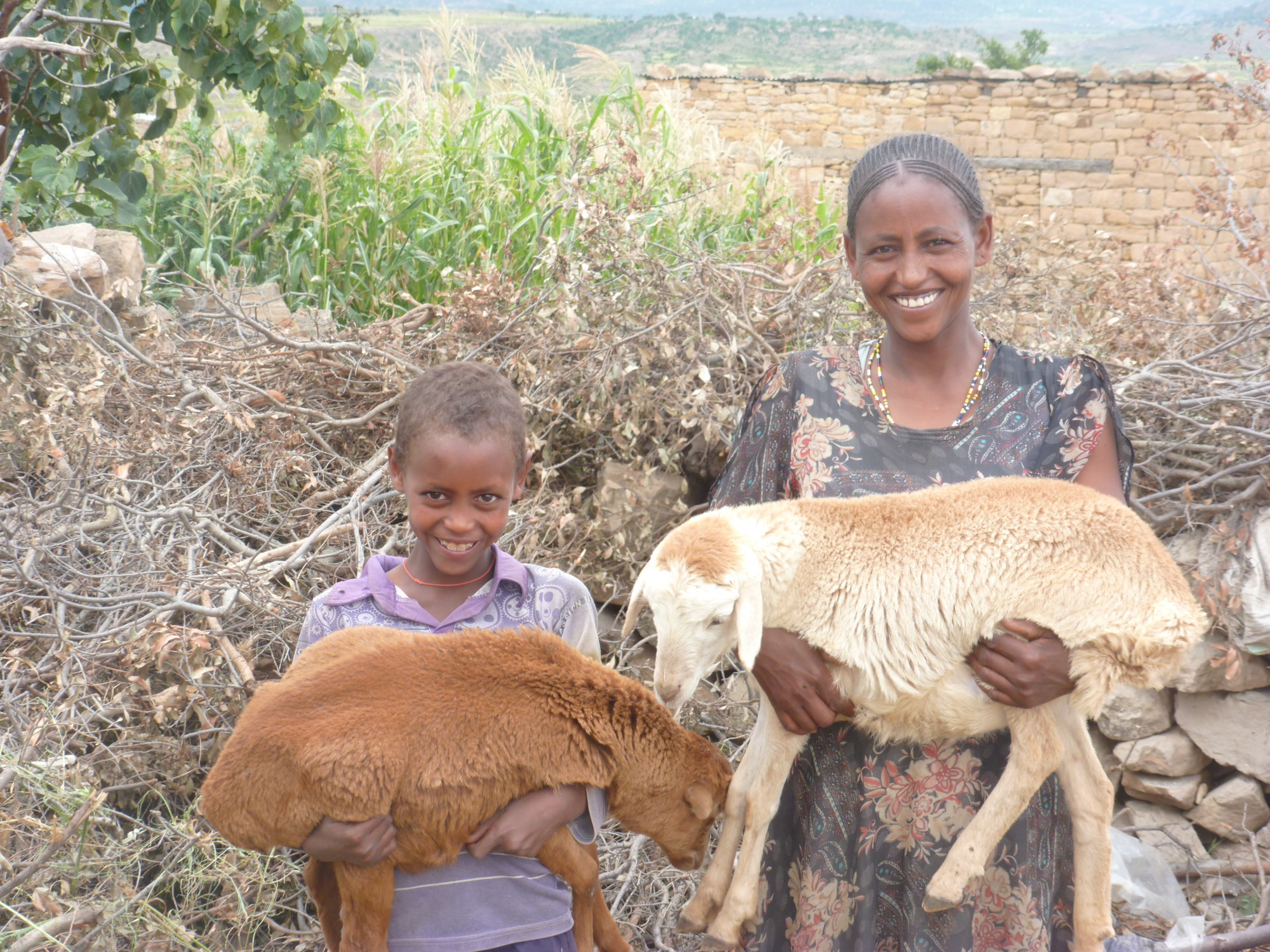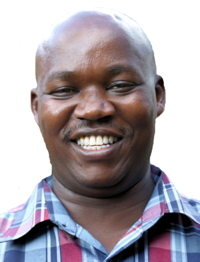Livestock performs multiple valuable functions for farmers, especially in developing countries, yet it requires more funding and resources to be directed toward it for its full potential to be realised.
Livestock makes a major contribution to food security and nutrition. Animals are an important source of high quality, readily absorbable protein and of minerals, vitamins and micronutrients deficient in cereals.
The consumption of livestock products is closely related to income. As incomes rise, people typically increase their consumption of meat, milk and eggs. In addition to rising incomes, high population growth in developing countries is fuelling the demand for animal food products. Increasing urbanisation also affects this as people living in towns are adopting new eating habits and consuming more animal protein.
The rapid increase in demand for animal food products puts pressure on the livestock sector, which needs to adapt fast in order to cope.
Increases in the intensity and size of operations are leading to increases in production. However, the importance of livestock to local social and economic values and the effects of climate change on livestock production have not been given adequate attention in developing countries.

Credit: Farm Africa
Livestock accounts for 40% of worldwide income from agriculture, and 33% of household income (Steinfeld H. et al.2006). Animal products are a vital source of disposable income for many smallholder farmers in developing countries. Livestock contributes considerably to cash-flow in many smallholder mixed farming systems – bringing in money that farmers use to pay for agricultural inputs and other family needs. Livestock farmers’ incomes are made up from the regular sales of products such as milk and eggs, from fees for services such as draught or transport; and from the sporadic sale of live animals, wool, meat, and hides. According to Gryseels[1], in smallholder crop-livestock systems in the Ethiopian highlands for example, livestock accounts for 34-87 per cent of total cash income from crops and livestock, with crops being more often a subsistence enterprise.
Livestock increases households’ economic stability and offers an inflation-proof way of storing wealth. For farmers engaged in both crops and livestock farming, livestock diversifies risk and offers an alternative income stream when seasonal crop failures and other natural calamities strike. For example, selling a few sheep or goats can help a family overcome a poor grain harvest.
Integration of livestock in cropping systems can help farmers become more resilient to changes in climate because intermingling crops with livestock production leads to a more efficient use of natural resources. For example, large animals used for pulling arable implements and carts, lifting water or skidding logs can be fed on crop residues and by-products, and their manure can be used as crop fertiliser. Manure returns organic matter to the soil, helping to maintain its structure as well as its water retention and drainage capacities, and thus helps farmers to increase yield and incomes.
A new focus on livestock is required
Despite its importance as a source of food and income, the livestock sector is under-funded and under-resourced throughout the developing world. Both private and public investors shy away from committing resources to livestock production. Lack of appropriate technologies, institutional support, and favourable policies for livestock production are key challenges, which have led to failure of many projects. In addition, the role of livestock production in food security, poverty alleviation and improvement of livelihoods is not widely communicated; with livestock and crop departments working in silos. The contribution of animals to both agricultural and overall economic development has not been adequately evaluated. Official statistics generally underestimate livestock contributions to the agricultural sector since many important non-food outputs which are difficult to quantify in monetary terms are excluded from calculations.
At Farm Africa, an international charity working to support smallholder farmers across eastern Africa, we recognise the importance of livestock in food and nutrition security and we work across diverse livestock systems ranging from pastoral, agro-pastoral and urban-peri-urban.
Livestock production systems in developing countries are dominated by smallholder farmers who channel their produce to consumers through informal markets. Farm Africa embraces a market-led approach to deriving value from livestock resources. For example, our Market Approaches to Resilience project, which targets pastoralists in Ethiopia as part of the international BRACED programme funded by the UK’s Department for International Development, is working to provide improved access of pastoralists to early warning and commercial insurance scheme services in case weather conditions are not favourable. We embrace the use of technology to deliver improved productivity such as monitoring of disease dynamics and treatment, and improved feeds, through innovative ways. In all our work we seek to minimise environmental damage.
Capacity building and technology transfer are key pillars of a sustainable livestock production project. An example of a successful Farm Africa model in Ethiopia and Kenya is a programme helping local farmers to undertake breeding programmes to improve their goat flocks. Small-scale resource-poor livestock keepers usually can’t access government services for breed improvement, and this limits their ability to improve the productivity of their animals. Farm Africa’s model has overcome this by providing livestock keepers with training, setting up community-based buck stations and supporting the establishment of local community breeding associations. The model has proved popular and is now being used widely across the region.
Livestock health is a major challenge facing smallholder farmers and livestock keepers, many of whom live in remote locations where livestock services are non-existent, poor quality or expensive. Every year, 25% of livestock in Africa die of preventable diseases.
Farm Africa supports programmes to train community animal health workers at the farm level, or “para-vets,” to prevent and treat common diseases. In 2011, Farm Africa set up the social enterprise Sidai that runs a network of centres providing high-quality livestock and veterinary services and crop inputs and to pastoralists and farmers in rural Kenya. Sidai centres charge fair market prices for their goods and services, and also offer professional technical advice to farmers and pastoralists. Sidai’s products and services are now available at 130 company-run stores, franchises and stockists across Kenya.
We also contribute to human health and nutrition by raising awareness amongst our farmers of the nutritional benefits from livestock for women and children’s diets.
Call for action and next steps
The role of animals in development programmes is generally understated, in spite of increasing demand, especially in developing countries, for animal products and services. Improved efficiency of animal agriculture is critical to achieving sustainable agricultural development and food security, particularly in low-income food deficit countries. Integrating livestock and agriculture increases short-term benefits and long-term sustainability of agriculture. Livestock’s contribution to smallholder development in developing countries can be strengthened by:
- The use of affordable technologies that are appropriate to the local context that smallholder farmers and livestock keepers are operating in.
- An enabling environment to ensure these technologies can be developed and shared. This requires improved capacity of national and international agricultural centres and non-governmental organisations, and government support for appropriate policies, infrastructure and support services.
- Improved access to finance mechanisms for small-scale farmers so they are able to invest in their livestock businesses.
- The inclusion of livestock issues in discussions on sustainability and climate change, poverty reduction and equity, food security and nutrition, and risk management in value chains.
- Stakeholder engagement at different levels and a review of public extension/technical capabilities.
[1] Gryseels G. 1988. The role of livestock in the generation of smallholder farm income in two vertisol areas of the central Ethiopian highland. In: Jutzi SC, Haque I, McIntire J and Stares JES (eds) Management of vertisols in sub-Saharan Africa. International Livestock Centre for Africa: Addis Ababa, Ethiopia.



